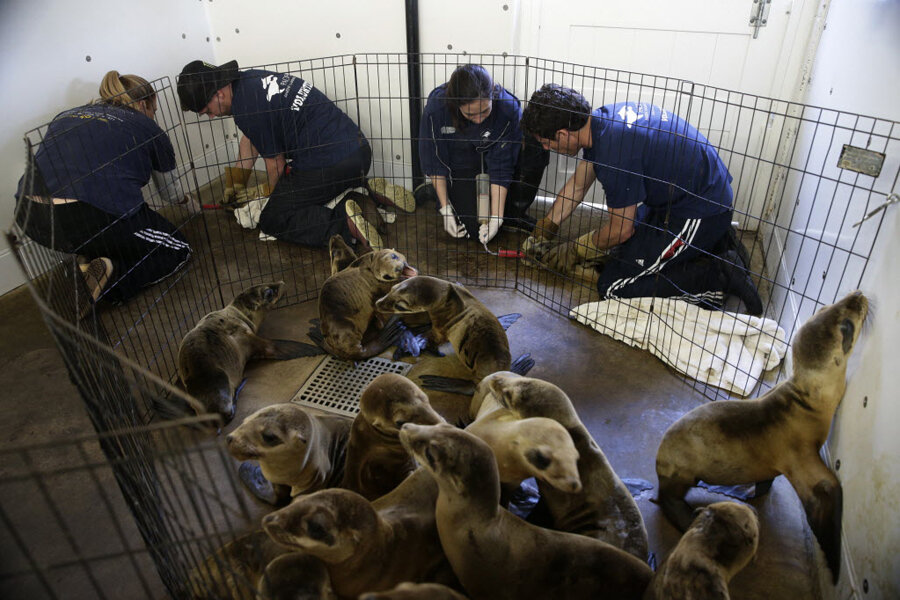Can we save California’s sea lions?
Loading...
Two years ago, in March, 619 emaciated sea lion pups washed up on California beaches. At nearly three times the expected amount, the stranding was declared an “Unusual Mortality Event” by the NOAA.
This year, in March alone, some 1,100 pups have already been found stranded – and the month is barely half over.
The occasional stranding is not unusual on the coast of Southern California, but researchers say these numbers are alarming. Malnourished young sea lions, many suffering from infections, have washed ashore by the hundreds, weakly meandering to beaches and oceanfront properties.
“They come ashore because if they didn’t, they would drown,” Shawn Johnson, director of veterinary science at the Marine Mammal Center, told the New York Times. “They’re just bones and skin. They’re really on the brink of death.”
Scientists believe that unseasonably warm waters have driven fish from the coastal Channel Islands, where the sea lions raise their young, forcing mothers to travel greater distances in search of food. Hungry and without guidance, young sea lions venture out on their own – but they are too young and inexperienced, stranding themselves on the Southern California coast in the process.
As strandings become increasingly common, untrained civilians have tried to help, splashing lost pups with water or feeding them canned tuna. But those attempts are generally misguided – young sea lions need specific nutrients and care that only marine animal rescuers can provide. Unfortunately, rescuers are already inundated with hundreds of sick pups – and with limited personnel and facilities, they struggle to keep up.
Scientists maintain that “catastrophic” death tolls are unlikely, but that the 300,000-strong California sea lion population will drop notably. Of the roughly-1,450 pups rescued, 720 are being treated. Those healthy enough for recovery get warm baths, food, and a place to splash around until they are ready to be released – for many, after just four or five weeks. But for those unlikely to survive, rescuers have to make an always-tough call – euthanasia.
Fortunately for the growing number of stranded pups, others are rising to the occasion. When the severity of the strandings became apparent, SeaWorld San Diego suspended its sea lion and otter show, freeing up their specialists for the rescue effort. Meanwhile, trainers from SeaWorld locations in San Antonio and Orlando are en route to provide additional support. And while it would be impossible to save every single sea lion, this kind of aid provides a glimmer of hope for an animal population that could use some.








